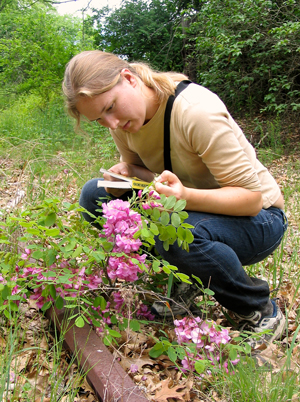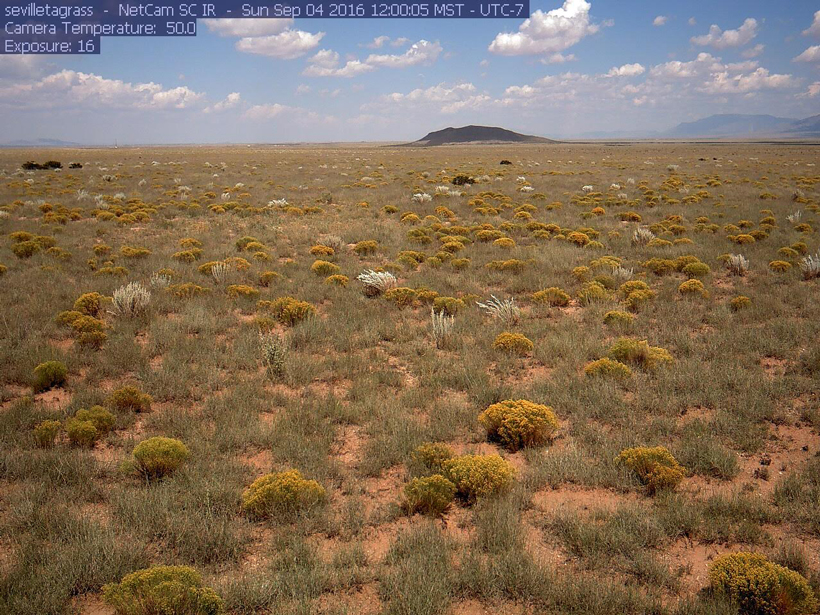Climate change is presenting new challenges for natural resource managers charged with maintaining sustainable ecosystems and landscapes. Phenology, a branch of science dealing with seasonal natural phenomena (bird migration or plant flowering in response to weather changes, for example), bridges the gap between the biosphere and the climate system. Phenological processes operate across scales that span orders of magnitude—from leaf to globe and from days to seasons—making phenology ideally suited to multiscale, multiplatform data integration and delivery of information at spatial and temporal scales suitable to inform resource management decisions.

Scientists gathered at a workshop in Cambridge, Mass., last June to identify opportunities and challenges associated with integrating multiscale, multiplatform streams of data to produce higher-level phenological data products (e.g., models) and applications at a variety of spatial and temporal resolutions (Figure 1a). The meeting included a mix of formal presentations, open discussions, and brainstorming, all complemented by a field trip to the nearby Harvard Forest.
Participants came from several national-scale activities and initiatives operating across different spatial and temporal scales. Representatives from the USA National Phenology Network described how observations of organisms in their natural environments are now being used to create national-scale data products at daily, kilometer-scale granularities.
Managers of the PhenoCam network discussed near-surface remote sensing using tower-mounted camera systems, and existing capacities for online data delivery and visualization in near real time. Producers of land surface phenology data sets derived from Earth-observing satellites (e.g., MODIS, Landsat, MERIS) described the production and delivery of spatially continuous products from spectral data collected across a range of spatial and temporal resolutions.
Over the 3-day workshop, recurring themes included
- [pullquote float=”right”]Real-time phenological monitoring can contribute to improved management of ecological systems in the face of increasing climate variability and change.[/pullquote]challenges and opportunities associated with extrapolation, forecasting, and up- and down-scaling in space and time, including model-based and statistical approaches;
- the currently untapped potential for matching and synthesizing observations across scales from organisms to regions; and
- the need for identification of novel applications of real-time phenological data and forecasts to inform resource management decision-making.
Workshop attendees agreed that the success and maturity of existing initiatives represent an opportunity for improved understanding of ecological patterns and processes, and that real-time phenological monitoring, coupled with cross-scale data integration and modeling, can contribute to improved management of ecological systems in the face of increasing climate variability and change (Figure 1b).

However, cross-scale, cross-platform integration will require harmonization of protocols within and across platforms to enable intercomparison of results and to facilitate bridging across scales from individual plants to satellite pixels. This integration will also require coordination on the development of algorithms and models to integrate phenological observations with other climate and environmental drivers.
Looking forward, strategic coordination would engender more rapid and efficient realization of the potential for integrated, multiscalar information. Targeted resource management opportunities would provide aspirational examples that could help justify further investment in such an effort. Such coordination would be most appropriate at the national level, perhaps through an interagency effort and in parallel with international efforts.
—Andrew D. Richardson, Harvard University, Cambridge, Mass.; Jake F. Weltzin, U.S. Geological Survey, USA National Phenology Network, Tucson, Ariz.; and Jeffrey T. Morisette (email: [email protected]), U.S. Geological Survey, Department of Interior North Central Climate Science Center, Fort Collins, Colo.
Citation:
Richardson, A. D.,Weltzin, J. F., and Morisette, J. T. (2017), Integrating multiscale seasonal data for resource management, Eos, 98, https://doi.org/10.1029/2017EO065709. Published on 23 January 2017.
Text © 2017. The authors. CC BY-NC-ND 3.0
Except where otherwise noted, images are subject to copyright. Any reuse without express permission from the copyright owner is prohibited.

